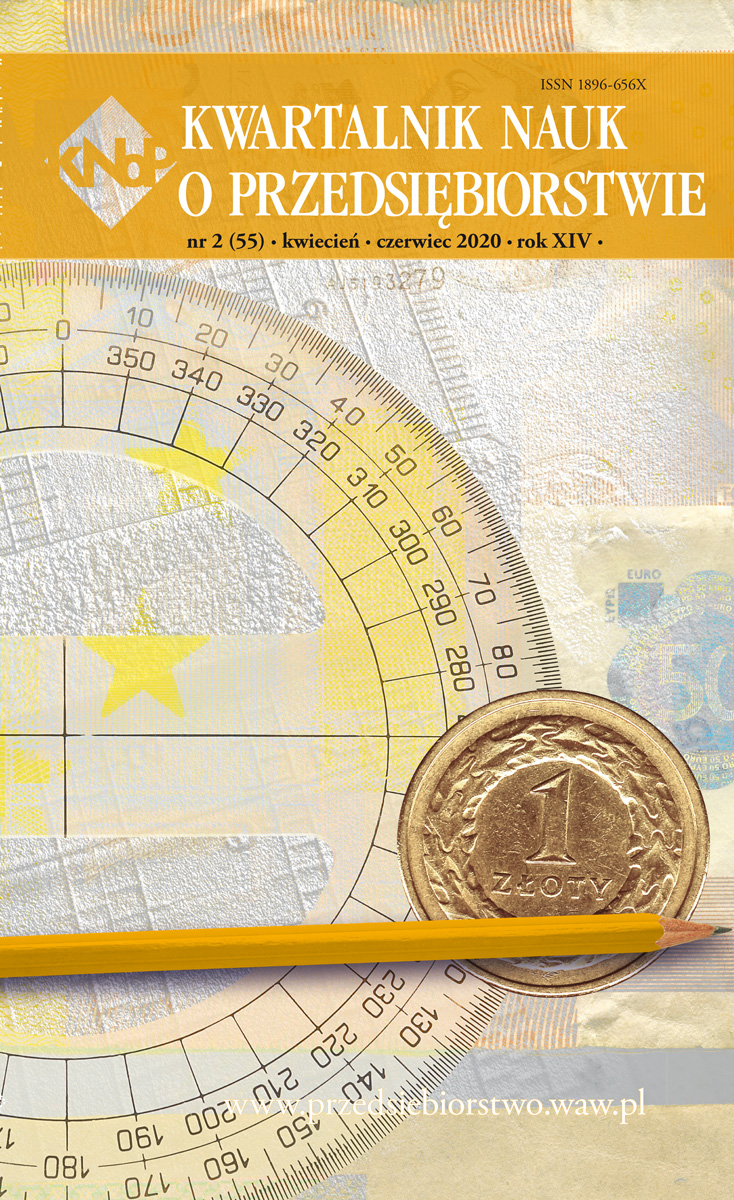M&A Post-merger integration – idea and role of sucesful integration process
Main Article Content
Abstract
More than a half of M&A’s ends as value destruction for shareholders. In a long period (over 5 years) only come M&A’s bring value creation for both side of the
transaction. M&A post- merger integration is one of the issues regarding sucesful M&A value creation. Most of the executive who are involved in M&A process is focused on due dilligence or „buying” aspects. However preparing a proper integration plan for a company might be even more important than due dilligence and Sales-Purchase Agreement negotiation process. It must be underlined that there is a plenty of key aspects than must be taken into consideration – from setting the right KPI’s for executive to understanding ‘the ecosystem’ and stakeholders. Communication is also one of the leading problems when it comes to post-M&A integration. In the recent years new idea of interim managers or executives has been arised. The interim executive come to the company and prepare and supervise whole process of integration. The purpose of the article is to explain importance of post-merger integration process as well as bring idea of post-merger integration manager.
Downloads
Article Details
The author of the article declares that the submitted article does not infringe the copyrights of third parties. The author agrees to subject the article to the review procedure and to make editorial changes. The author transfers, free of charge, to SGH Publishing House the author's economic rights to the work in the fields of exploitation listed in the Article 50 of the Act of 4 February 1994 on Copyright and Related Rights – provided that the work has been accepted for publication and published.
SGH Publishing House holds economic copyrights to all content of the journal. Placing the text of the article in a repository, on the author's home page or on any other page is allowed as long as it does not involve obtaining economic benefits, and the text will be provided with source information (including the title, year, number and internet address of the journal).
References
2. Morgan Stanley (2020), M&A in 2020: four trends to watch. shorturl.at/esJO2, 7.05.2020.
3. Lee J.J. (2013), Dancing with the enemy? Relational hazards and the contingent value of repeat exchanges in M&A markets, “Organization Science”.
4. Capron L., Mitchell W. (2012), Build, borrow, or buy: Solving the growth dilemma, Harvard Business Press.
5. Dörrenbächer C., Witzmann N. (2015), The link between cultural due diligence and socio-cultural post-merger integration management as a critical success factor in M&As, Institute of Management Berlin at the Berlin School of Economics and Law.
6. Yaakov W. (2013), A comprehensive guide to mergers & acquisitions: Managing the critical success factors across every stage of the M&A process, FT Press.
7. Achar A., Uncourt Ct., (2020), MAC Clauses in M&A Transations, HeinOnline.
8. Angwin D. (2004), Speed in M&A Integration: The first 100 days, “European Managment Journal”.
9. Todnem B.R. (2005), Organisational change management: A critical review, “Journal of change management”.
10. Bhal KT., Bhaskar AU., Ratnam CSV. (2009), Employee reactions to M&A: Role of LMX and leader communication, Leadership and Organization.
11. Wratny J. (2012), Problem reprezentatywności związków zawodowych w zakładzie pracy: więcej pragmatyzmu czy demokracji?, „Praca i Zabezpieczenie Społeczne”.
12. Maire S., Collerette P. (2011), International post-merger integration: Lessons from an integration project in the private banking sector, “International Journal of Project Management”.
13. Rocnkess J., Rockness H., Ivancevich Sh. (2001), The M&A game changes, “Financial Executive”.
14. De Noble A., Gustafson L., Hergert M. (1988”, Planning for post-merger integration – eight lessons for merger success, “Long Range Planning”.
15. Alaranta M. (2005), Evaluating success in post-merger IS integration: a case study, “The Electronic Journal Information Systems Evaluation”.
16. Davis D. (2012), M&A Integration: M&A Integration: How To Do It. Planning and delivering M&A integration for business success, John Wiley.

